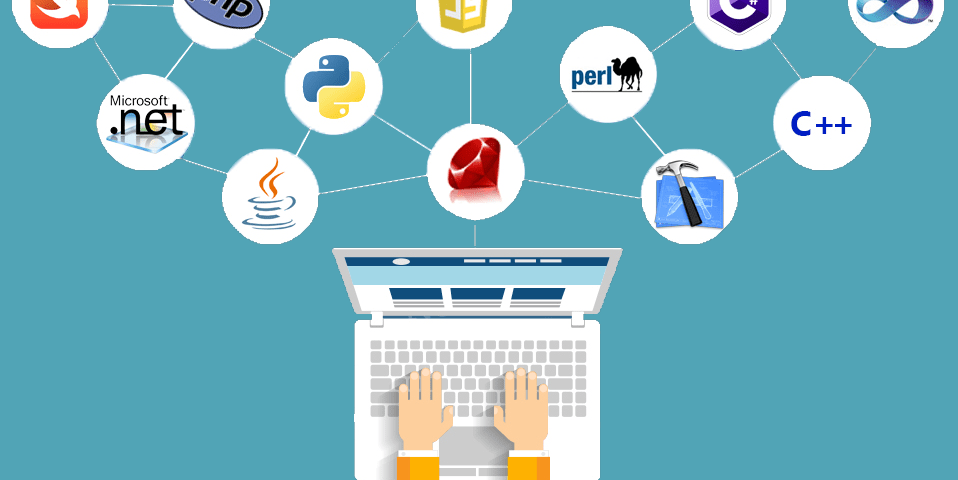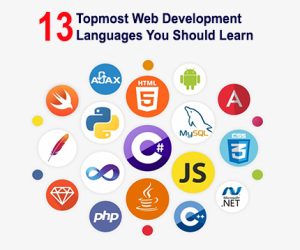- Have any questions?
- (Prasad) +91 96191 46851 | (Parag) +91 99878 20022
- support@pnpwebdesign.com
Navigating the World of Web Development Languages: Your Guide to Crafting Digital Masterpieces

Unveiling the Power of Web Development with WordPress: Your Gateway to Digital Success
January 28, 2024
Navigating the Hunt: Where to Find Web Development Clients?
January 28, 2024Navigating the World of Web Development Languages: Your Guide to Crafting Digital Masterpieces

In the vast realm of web development, the choice of programming languages serves as the cornerstone of every digital masterpiece. Each language brings its unique strengths and capabilities to the table. Shaping the functionality and aesthetics of websites and web applications. In this comprehensive guide, we will embark on a journey through the diverse landscape of web development languages, exploring their features, applications, and the transformative impact they have on the online world.
Understanding Web Development Languages:
The Language of the Digital Realm Web development languages encompass a diverse array of tools and frameworks used to create dynamic and interactive websites. From front-end languages like HTML, CSS, and JavaScript to back-end languages like Python, PHP, and Ruby, each language plays a crucial role in different stages of website development. The passive observer is introduced to a symphony of code. Where each line contributes to the harmonious blend of form and function.
Front-End Development Languages:
Crafting the User Experience Front-end development languages focus on creating the visual and interactive elements of a website that users interact with directly. HTML, the foundation of web pages, provides the structure and content, while CSS stylesheets dictate the layout and appearance. JavaScript adds interactivity and dynamic behavior, allowing for animations, form validation, and real-time updates. The passive participant is immersed in the world of user-centric design, where every line of code shapes the digital experience.
Back-End Development Languages:
Powering the Engine Behind the Scenes Back-end development languages handle the server-side logic and data processing that enable websites to function dynamically. Languages like Python, PHP, and Ruby facilitate tasks such as database management, user authentication, and content management system (CMS) functionality. The passive explorer delves into the realm of server-side scripting. Where code execution occurs away from the user’s view, powering the engine that drives website functionality.
Full-Stack Development:
Bridging Front-End and Back-End Worlds Full-stack development combines both front-end and back-end technologies, allowing developers to create comprehensive web solutions from end to end. Full-stack developers are proficient in multiple languages and frameworks, enabling them to tackle projects with a holistic approach. The passive observer gains insight into the versatility of full-stack development. Where fluency in both front-end and back-end languages opens doors to a wide range of opportunities.
Choosing the Right Language for Your Project:
Factors to Consider When selecting a web development language for a project. Several factors come into play, including project requirements, scalability, performance, and developer expertise. The passive participant is guided through a decision-making process that takes into account the unique needs and objectives of their project. Ensuring that the chosen language aligns with their vision and goals.
Trends and Innovations in Web Development Languages:
The field of web development is constantly evolving, with new languages, frameworks, and technologies emerging at a rapid pace. From the rise of JavaScript frameworks like React and Vue.js to the growing popularity of serverless architecture and progressive web apps (PWAs). The passive explorer is introduced to the latest trends and innovations shaping the future of web development. Keeping pace with these advancements ensures that developers stay at the forefront of the industry.
The Importance of Continuous Learning and Adaptation:
In the ever-changing landscape of web development languages, continuous learning and adaptation are essential for staying relevant and competitive. The passive observer is encouraged to embrace a growth mindset, seeking out new technologies, honing their skills, and collaborating with peers to expand their knowledge and expertise. Through lifelong learning, developers can navigate the complexities of web development with confidence and agility.
Web development languages Conclusion:
In conclusion, web development languages form the backbone of every digital experience. Shaping the way we interact with and perceive the online world. Whether you’re crafting elegant user interfaces, building robust server-side applications, or bridging the gap between front-end and back-end technologies. The choice of language has a profound impact on the success of your project. So, embrace the diversity of web development languages, explore new horizons, and embark on a journey of continuous growth and innovation in the dynamic field of web development.





